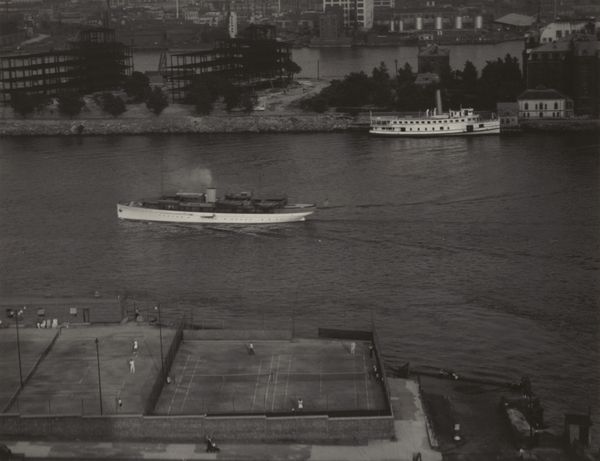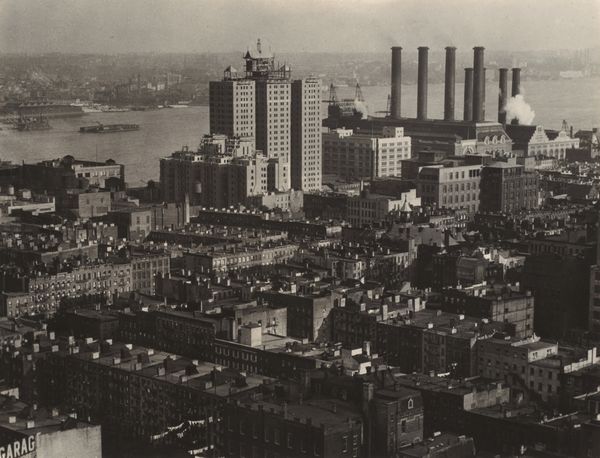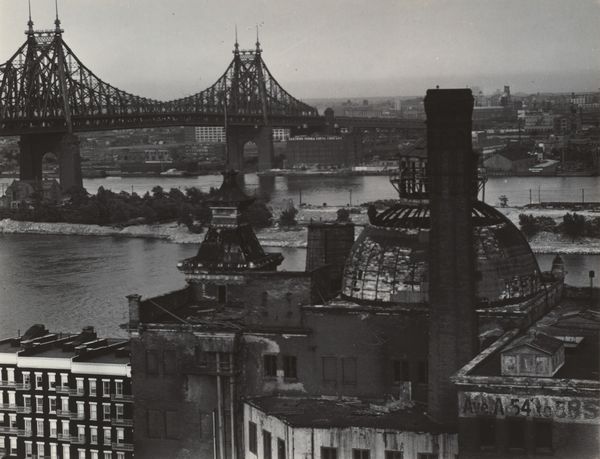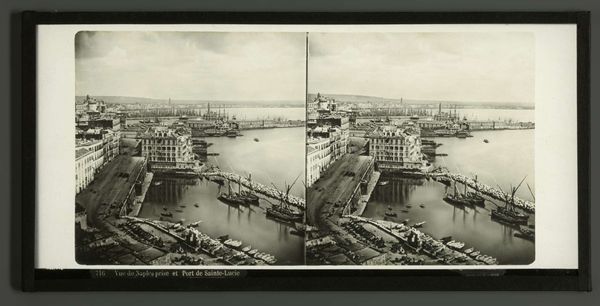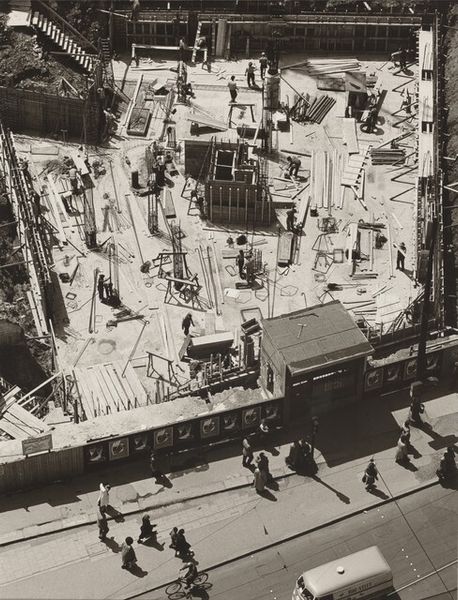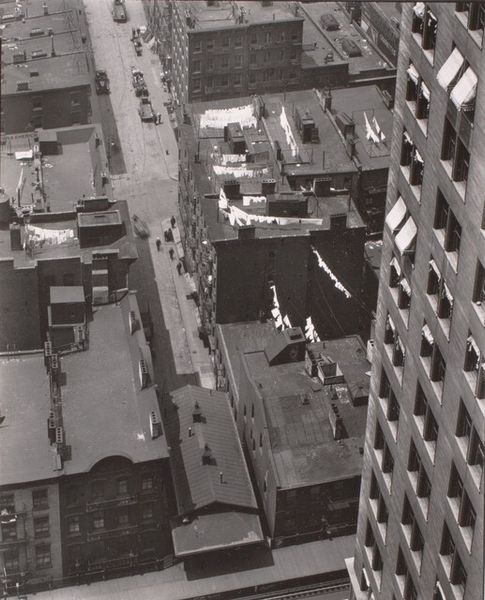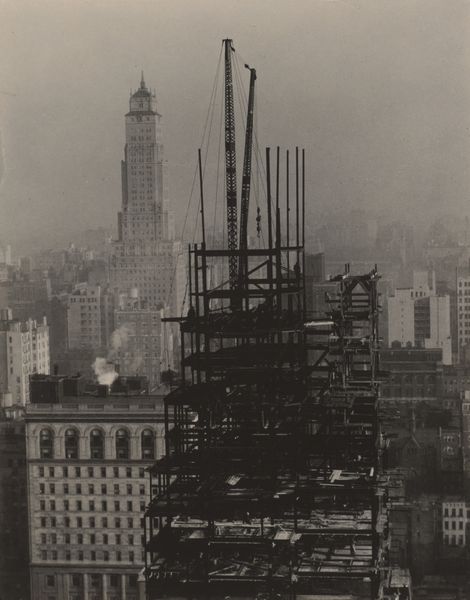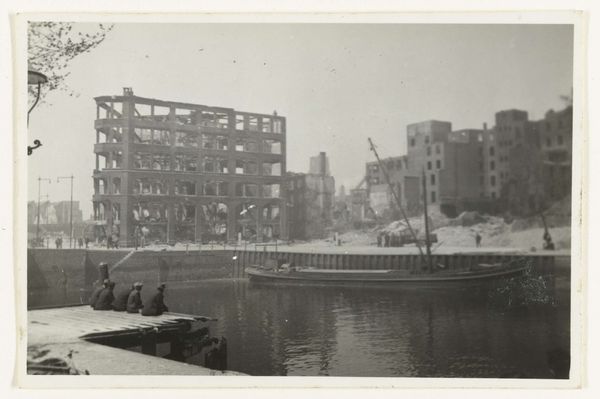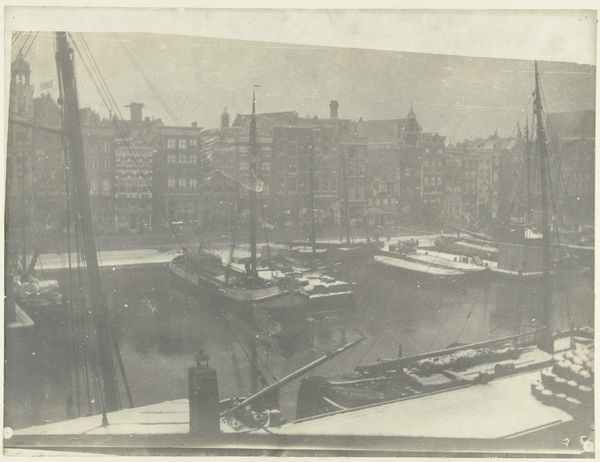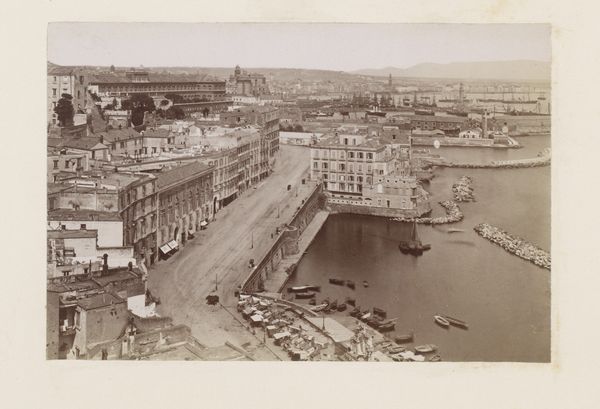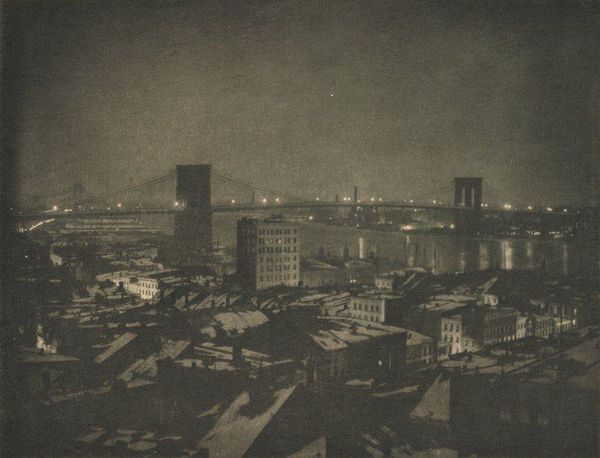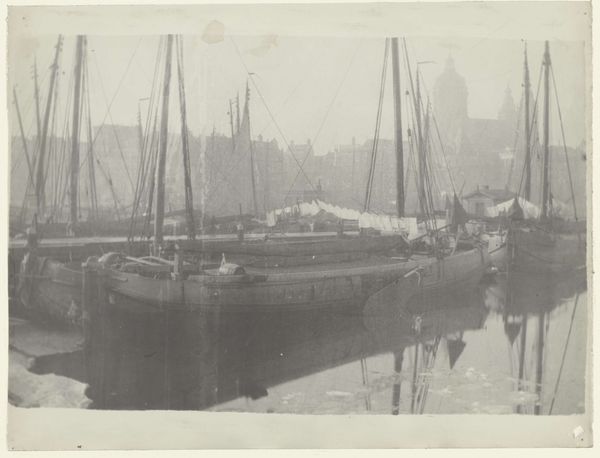
photography
#
black and white photography
#
landscape
#
outdoor photograph
#
black and white format
#
photography
#
black and white
#
cityscape
#
monochrome
#
modernism
#
realism
Dimensions: sheet (trimmed to image): 9.2 x 11.8 cm (3 5/8 x 4 5/8 in.) mount: 33 x 26.9 cm (13 x 10 9/16 in.)
Copyright: National Gallery of Art: CC0 1.0
Curator: Let's turn our attention to Alfred Stieglitz's photograph, "New York from 405 E 54th Street," taken in 1937. Editor: It's a stark image, immediately evoking a sense of transience. The decaying structure in the foreground, juxtaposed with the industrial skeleton rising across the river... it speaks to the ever-changing face of the city, the labor and waste inherent in progress. Curator: Absolutely. Stieglitz, as a key figure in promoting photography as fine art, captured this scene during a period of immense social and economic change. New York was experiencing rapid urban development, reflected in the architecture and the bridge looming in the background. This photograph serves as a historical document, recording the city's evolving identity. Editor: And it's the materiality that grips me—the crumbling facade of that building, the raw ironwork of the structures going up on what I guess is Roosevelt Island, the density of those older residential blocks just behind, they point to different forms of labor. Construction, demolition, inhabiting – all these interwoven cycles. Curator: Yes, the high vantage point provides a sweeping panorama. It shows not just buildings but entire systems, social organizations and a way of looking at the metropolis, which could serve also as a form of social critique. There is this interplay of shadow and light in black and white that amplifies the drama, further drawing us in. Editor: Stieglitz wasn’t afraid to depict the rough edges, you know? He highlights the tangible consequences of modernization—decay alongside creation—and asks us to think about what is lost and what is gained, by representing materials both crude and wasted. What about how photography, his specific chosen material, mediated that perspective? Curator: Stieglitz chose photography, then still debated as a "high" art, because of its apparent realism, but of course even this real captured a constructed moment, both shaped and framed. This work marks how the early modern photographers wrestled with a sense of American Identity. Editor: Seeing these layers together—physical decay and budding modernity—offers a raw insight into our relationship with place and labor. Curator: I agree. Stieglitz offers a powerful meditation on urban life. Editor: An uncomfortable and vital meditation, as well.
Comments
No comments
Be the first to comment and join the conversation on the ultimate creative platform.
